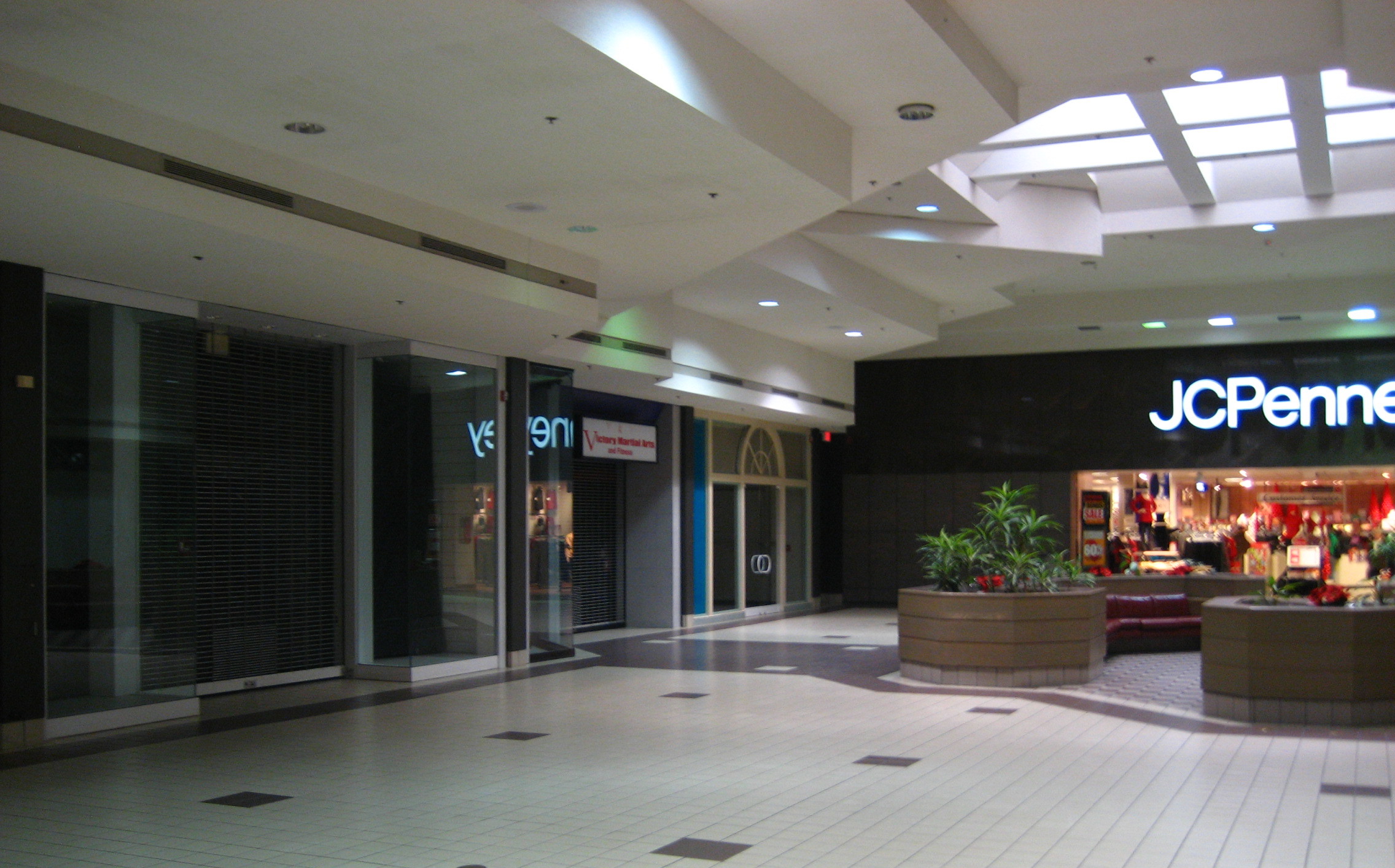As a kid growing up, the mall was the place to be. First it meant that you had access to a car (or somehow got a ride). Second, you could wander around, eat terrible food, and see a movie. These days, though, malls are barely hanging on.
The decline has been tied to the rise of online retail, the credit crunch as Americans have focused on getting out from under debt, a slower housing market (many mall purchases are home-wares), and the success of non-mall big boxes such as Target in luring away mall customers. As people come back to the center cities has one of the greatest signs of suburbanization has collapsed?
Take, for example, Charleston, SC. In Charleston, the large Citadel Mall in suburban West Ashley faces foreclosure. On the other hand, downtown revitalization and the popularity of the College of Charleston have created a problem many cities would love to have – lots of pedestrian traffic. Recently, the city has felt the need to tighten its pedestrian ordinances for its downtown streets. The city recently passed an overhaul of its skateboarding regulations, for instance. The college bumps against the downtown tourist and shopping district, which boasts an Apple Store, Brooks Brothers, H&M, J. Crew, Half Moon Outfitters, and other stores that have abandoned the mall for downtown.
Similar stories have come up all over the country. Nashville, also, has a booming economy, gained national acclaim for its hip downtown in Time and GQ, and contains multiple dead suburban malls.
With so many malls taking a hit, cities and businesses want to retrofit these massive pieces of property. The New York Times ran a piece about towns creating second lives for their old malls. Sometimes that does not happen and the malls are demolished. Here in Rhode Island, the Rhode Island Mall simply locked its doors after a flood. Competition from other malls and big box stores made it unprofitable to rebuild. Its competitors, Warwick Mall and Providence Place mall, were too powerful.
Providence Place Mall has the advantage of being urban, not suburban. Providence Place, for example, is right downtown and next to Kennedy Plaza (the bus hub), and Providence Amtrak. The downtown mall has bested the one out in the suburbs. That supports Jeff Speck and Walkable Cities’ thesis that the future lies in the walkable urban core. Fans of Jeff Speck and Walkable Cities will appreciate another book: Retrofitting Suburbia: Urban Design Solutions for Redesigning Suburbs, which calls on cities and towns to turn auto-dependent suburbs into walkable communities. The old style mall needs work to keep up with societal trends.
If you have a few minutes, take a look at deadmalls.com. This website has spring up for documenting the decline of malls, such as Rhode Island Mall, which is listed on the site. There are thousands of pictures of empty storefronts in once-vibrant shopping spaces. It is, truly, the end of an era.
Cities and towns should retrofit old malls even if retail has moved downtown. In Rhode Island, using old industrial buildings for creative purposes has become a real goal. In Pawtucket alone square feet have gone to farmers’ markets and rock and roll venues. In other towns, climbing gyms have sprung up in old warehouses. This matters because we do not want to simply shift jobs back and forth from suburbs to the center. Letting the old malls languish seems wrong. After all, where will Jay and Silent Bob hang out?
